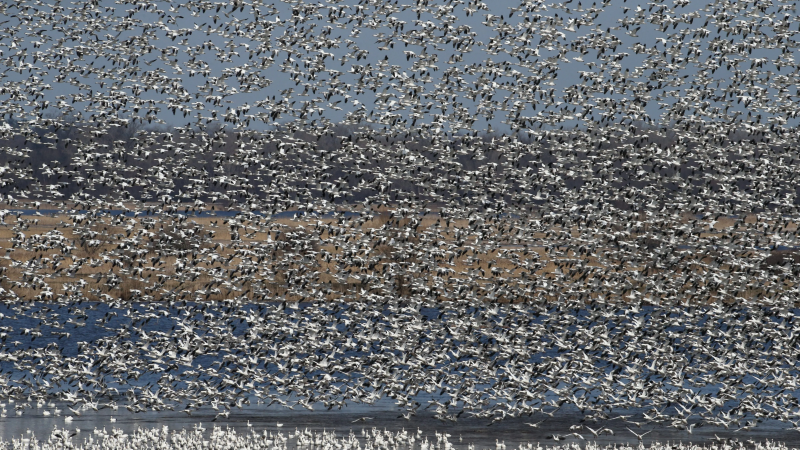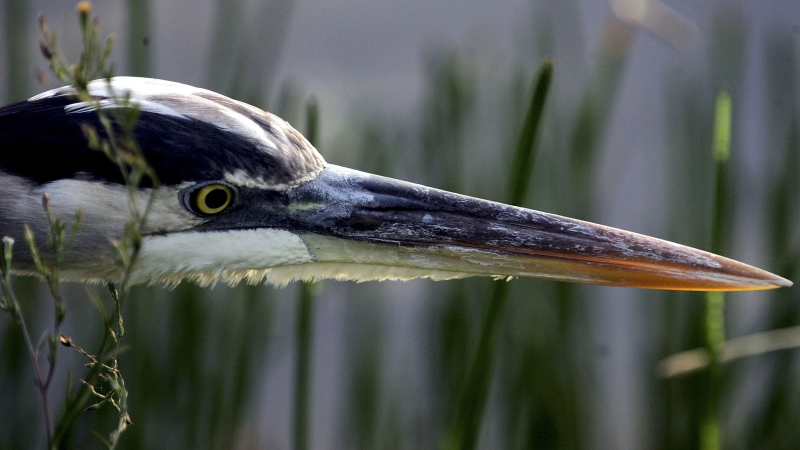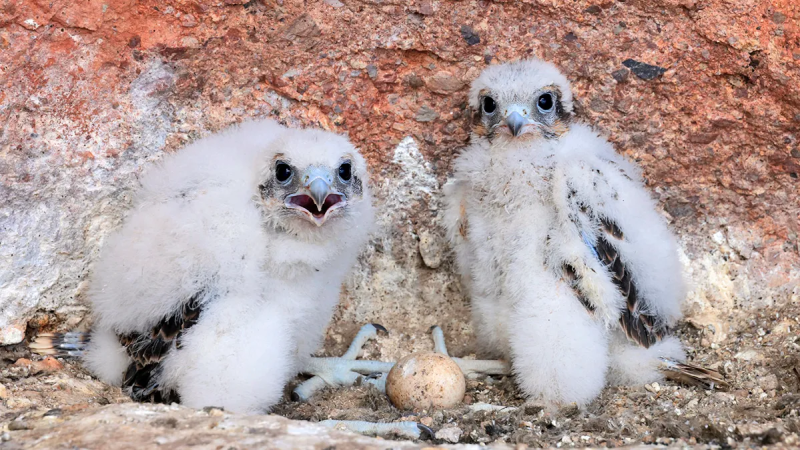Swarms of birds will fly over the US soon. Explore BirdCast's new migration tool to help you prepare.

- According to BirdCast, ornithologists didn't realize the magnitude of migration that occurred at night until the turn of the 20th century.
- Fall migration timing varies across the U.S. and even within regions, according to BirdCast.
- In the “before times” — prior to BirdCast’s 3-day migration forecasts for the lower 48 states — birders had to guess which nights would be big ones for migration.
Crossing continents and oceans, birds rarely stay in the same place their whole lives, and their epic fall migration will soon be hard to miss for many North Americans.
Migration is the best time to be a birdwatcher, says the Cornell Lab of Ornithology’s Hugh Powell.
As days get shorter and weather slowly shifts, birders are preparing for the spectacular fall migration. BirdCast, launched in 2018 by the Cornell Lab of Ornithology, released their migration tools for the 2023 season earlier this month.
“Twice a year, hordes of birds fly thousands of miles through the night to grace your home turf for a few days or weeks,” Powell writes. “But they don’t come in a steady convoy—it’s more like a stuttering stream of flurries and pauses.”
These influxes make some days more “quiet while others are packed with new arrivals,” Powell writes.
In the “before times” — prior to BirdCast’s 3-day migration forecasts for the lower 48 states — birders had to guess which nights would be big ones for migration.
BirdCast combines decades of migration science with real-time radar data to give users:
- Continental map of migration activity
- Estimates of total migration traffic, direction, speed and more for any county or state
- Lists of likely species arriving now in your area
- Local migration alerts when waves of migrants are on their way
- Historical data
When will birds arrive for fall migration 2023?
Explore USA Today’s databases to learn which migrants are expected to travel through four BirdCast regions and when to expect them, or you can visit the BirdCast migration dashboard.
For each region, BirdCast includes a migrants’ noticeability (how likely birders are to notice a given species’ arrival or departure based on eBird reports), estimated arrival date, influx, peak and departure. Some species are missing dates if their arrival or departure occurs largely outside of the spring months, or if a species lingers in the region before or after migration, BirdCast said.
Upper Midwest and Northeast migratory birds
Gulf Coast and Southeast fall bird migration
Great Plains bird migration
Bird migration in the West
Audubon Society’s 2023 photo contest:See award winners
In spring of 2022, BirdCast released a new and expanded migration dashboard to make it even easier for birders to decide when and where to bird during the migration seasons.
"Migrating birds probably cross every square mile of land and water in North America," says Audubon Magazine's Kenn Kaufman. "So the billions of migrants are spread across millions of square miles, and the magnitude of the passage often escapes our notice.
According to the National Audubon Society, bird forecasts are based on a network of 143 government managed radars around the U.S. which collects information about the atmosphere in addition to the movements of insects and birds.
“It's important [to remember] that it is an estimate, we're not actually standing out there, counting bird by bird,” data visualization expert Audrey Carlsen told Audubon.
Why birders think about "fall" migration in summer
BirdCast often uses Aug. 1 “as a proxy for the fall migration season’s beginning, because by this point in the year, numbers of birds are beginning to increase” and become more noticeable on radar data. When heavy insect and bat activity fades by late summer, bird movements become easier to track and display on easy-to-read forecast maps.
Birders don't associate fall migration with the official fall season because movements can begin as early as mid June for some species, said Cornell’s Andrew Farnsworth.
Top 10 states ranked by total birds that overflew in spring 2023
According to BirdCast, these are the top 10 states for spring, in terms of total birds overflying the state in a season:
- Missouri,
- Oklahoma,
- Kansas,
- Nebraska,
- North Dakota,
- Wisconsin,
- Minnesota,
- Texas,
- South Dakota,
- Florida.

More:America's 10 best national parks for birding and an interactive map for summer bird-watching
What do BirdCast maps and tools show?
Visit BirdCast’s migration dashboard to explore how patterns compare to previous years in local counties and states in the contiguous U.S. You can also watch migration patterns in near real time or see a summary for a whole night the next morning.
The live data feed runs from March 1 to June 15 during spring migration and from August 1 to November 15 during fall migration.

Disclaimer: The copyright of this article belongs to the original author. Reposting this article is solely for the purpose of information dissemination and does not constitute any investment advice. If there is any infringement, please contact us immediately. We will make corrections or deletions as necessary. Thank you.







